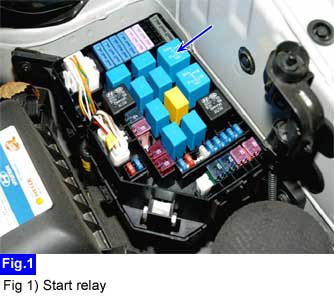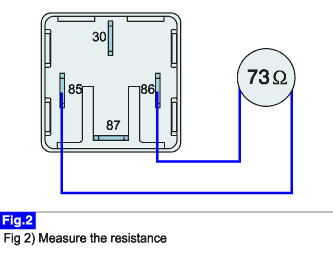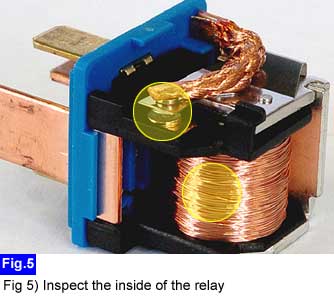Remove the start relay from the E/R compartment junction box.

First of all check damage of harness and terminals : Check terminals for contact resistance, corrosion and deformation.
When battery power is not supplied to starter although start relay circuit is normal, Inspect the start relay.
IG KEY "OFF", ENGINE "OFF"
Remove the start relay from the E/R compartment junction box.

Before measuring resistance, you must calibrate(0Ω) the tester.
"Multitester Calibration" of "Details Inspection(Equipment Setting)" reference
Measure the resistance between terminal "85" and terminal "86".
Specification : 73Ω ± 10 % (20℃)

Measure the resistance between terminal "30" and terminal "87".
Specification : Discontinuity (Infinite Ω)

Actuate the relay by suppling battery power and chassis ground at terminal "85", "86".
Specification : Contacts are connected.
Measure the voltage between terminal "30" and terminal "87" when relay is actuated.
Specification : Continuity (below 1.0 Ω)

※ If trouble symptom occurs intermittently although relay is operated well as above, Inspect the inside of the relay.
- Make sure of damage of the relay cover.
- Contact : Inspect contact connection and carbon deposit by spark.
- Coil : Inspect partial damage by coil short and enamel coating damage.

Case 1 : In case that relay coil resistance is high. (Open)
Engine cranking is impossible because battery power is not supplied to starter.
Replace the start relay.
Case 2 : In case that relay coil resistance is low. (Short)
Start fuse (10A) blown because of relay coil short.
Engine cranking is impossible because battery power is not supplied to starter.
Replace the start relay.
Case 3 : In case that relay coil is normal. (Intermittent poor contact connection)
Engine cranking is impossible intermittently because battery power is not supplied to starter.
Replace the start relay.
Parts number : 95230-3A400
Standard : DC 12V 50A (resistance interior relay)